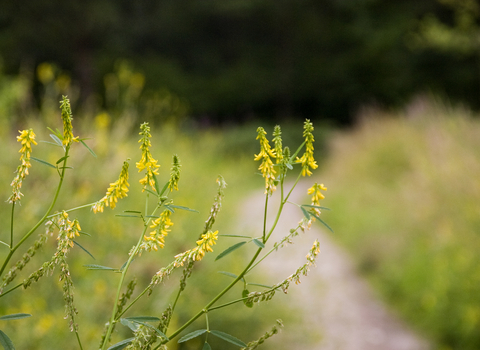
©Paul Lane
Tall melilot
Tall melilot was introduced into the UK as a fodder crop, but has now become naturalised. It displays golden, pea-like flowers on tall spikes, which are followed by black, hairy seed pods.
Scientific name
Melilotus altissimusWhen to see
June to AugustSpecies information
Category
Statistics
Height: up to 1.5mIntroduced, but naturalised species.
